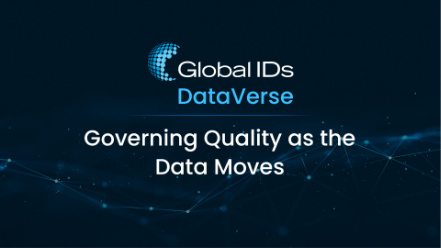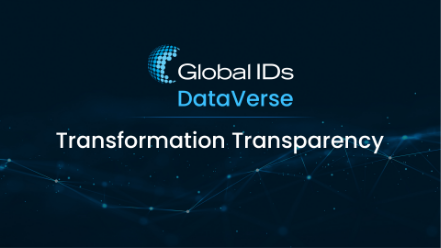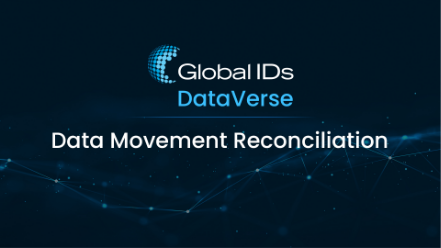Unleash the Provenance
Of Your Data
Use a pragmatic approach to large scale lineage. Achieve a comprehensive understanding of how data flows through your organization. Use our automated approach to gain visibility in your data. Build trust with end-to-end data lineage across your data ecosystem.
Find Lineage
Find Lineage
Validate Lineage
Validate Lineage
Accumulate Proof
Accumulate Proof
Visualize Lineage
Visualize Lineage
Enforce Policy
Enforce Policy
Frequently Asked Questions about Data Lineage
Data lineage is like a roadmap that shows where your data comes from, where it goes, and what happens to it along the way. It's important because it helps you make sure your data is accurate and trustworthy. Data lineage is a crucial guide that helps organizations use and manage their data effectively and with confidence.
Improving data quality using data lineage involves a systematic approach to understanding, monitoring, and managing the flow of data within your organization. There are some steps you can take to use data lineage for enhancing data quality.
- Identify and document where your data comes from (sources) and where it goes (destinations). Understand the systems, databases, applications, or external sources that contribute to your data.
- Document the processes and transformations applied to the data as it moves through the system.
- Define key data quality metrics based on your business requirements (e.g., accuracy, completeness, consistency). Use these metrics to evaluate the quality of data at different points in the data lineage.
- Implement a system to monitor and track changes to the data lineage over time. Set up alerts or notifications for any anomalies or deviations from predefined data quality thresholds.
- Conduct regular audits of the data lineage to ensure alignment with business objectives and data quality standards.
By systematically incorporating these steps into your data management practices, you leverage data lineage as a powerful tool for maintaining and enhancing data quality throughout your organization.
With Global IDs’ solutions, you can create lineage by classifying data sources and by using a combination of automated and limited manual input, to validate the path of the critical data elements, in the context of results such as reports or models.
The top challenges of data lineage often revolve around complexity, standardization, and dynamic data environments. Here are the most important ones:
- Complexity of Data Ecosystems: Many organizations have intricate and interconnected data ecosystems, involving multiple systems, databases, and processes. This complexity makes it challenging to accurately capture and represent the entire data lineage. It becomes difficult to create a clear and comprehensive view of how data flows through the organization, leading to potential gaps or inaccuracies in the data lineage.
- Lack of Standardization: Inconsistent naming conventions, data structures, and formats across different systems hinder the standardization of data lineage. Each system may use its own terminology, making it challenging to create a unified and easily understandable view. Without standardization, interpreting and following data lineage becomes more complicated.
- Dynamic Data Environments: Data environments are dynamic, with constant changes in data sources, processes, and destinations. Keeping data lineage up-to-date manually can be a time-consuming task, especially in environments where changes occur frequently. Outdated data lineage information can lead to incorrect assumptions, impacting decision-making and data quality. Automation and regular updates are essential to maintain the accuracy of data lineage in dynamic environments.
To use data lineage to comply with regulations:
- Map Data Flows: Use data lineage tools to map how data moves through your organization.
- Identify Sensitive Data: Clearly label and track sensitive or personally identifiable information (PII).
- Document Processes: Detail the steps and transformations applied to data at each stage of its journey.
- Link to Policies: Connect data lineage documentation to your organization's data governance policies.
- Implement Access Controls: Set up access controls to restrict access to sensitive data within the lineage.
- Maintain Audit Trails: Use tools that provide audit trails and versioning for tracking changes to data lineage.
- Automate Compliance Checks: Implement automated checks to ensure ongoing compliance with regulations.
- Document Retention Policies: Clearly document and enforce data retention and deletion policies.
- Include External Sources: Incorporate data lineage from external sources if applicable.
- Educate Stakeholders: Ensure relevant stakeholders understand the role of data lineage in compliance.
- Conduct Regular Audits: Schedule regular audits to verify alignment between documented lineage and actual practices.
By following these concise steps, organizations can leverage data lineage to demonstrate compliance with regulations efficiently.
Data Lineage Knowledge Base
Observability Tools Prevent ‘Data Downtime’
The uninterrupted flow of data is crucial for decision-making, customer satisfaction, and overall operational success.
Read MoreData Observability Moving from Detective to Preventive Data Controls
In the dynamic landscape of data-driven decision-making, maintaining high-quality data is the key to success or failure.
Read MoreData Lineage: The First Step towards Understanding Enterprise Data
Mankind has benefitted from the study of lineages for years. Fossils that remain in place of the dinosaurs tells us so much about them…
Read MoreWhat is Lights Out Scanning?
Lights out scanning is an automated approach to enterprise-level discovery through scanning of databases without human intervention minimizing manual involvement in intermediate steps.
DownloadWhat is Data Lineage?
Data Lineage is the process of tracking and visualizing the flow of information across the data ecosystem.
DownloadA Pragmatic Approach to Enterprise-wide Data Lineage
A pragmatic approach to understanding and documenting enterprise-wide data lineage involves initial input from humans and large-scale machine automation.
DownloadRelated Use Cases

Data Lineage Transparency

Governing Quality
as the Data Moves

Transformation Transparency

Data Movement Reconciliation
Global IDs Data Lineage Ecosystem
As Quoted in 
CDO, Manufacturing
President, Banking
Data Governance Specialist, Banking
My favorite aspect of Global IDs is the company itself. The leadership of Global IDs has demonstrated to me that it cares greatly about my success in using the product and ensuring I am getting the right value to help my company in meetings its goals.
Data Governance Lead, Finance
The support team makes all of the difference. They’re always willing to work with you to create whatever you feel like is missing or needs to be tweaked to provide a better end-user experience.
Data Governance Lead, Banking
The company has a passion for adding new product features that are needed for modern metadata management, and they strive to truly understand the needs of their customers. The technical depth of the product provides confidence in its applicability and use. Overall, it is the ecosystem approach that really sets Global IDs apart from the competition.






